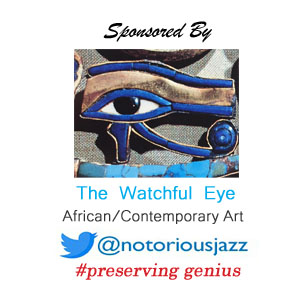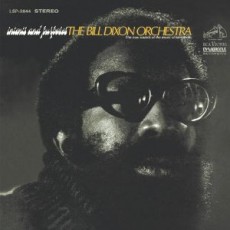
Daily Dose Of Jazz…
Bill Dixon was born on October 5, 1925 in Nantucket, Massachusetts and his family later moved to Harlem, New York City when he was about 7. It wasn’t until some twenty years later that he became interested in music and trumpet began his five-year studies at the Hartnette Conservatory of Music in 1946. He studied painting at Boston University, the WPA Arts School and the Art Students League. During the early 1950s while employed at the United Nations, he founded the UN Jazz Society.
By the 1960’s Dixon established himself as a major force in the jazz avant-garde movement, organizing and producing the “October Revolution in Jazz”. This first free-jazz festival comprised four days of music and discussions at the Cellar Café in Manhattan with musicians such as Cecil Taylor and Sun Ra participating.
Bill would later found the Jazz Composers Guild, become a professor of music at Bennington College, establish their Black Music Division, and was one of four featured musicians in the Canadian documentary Imagine the Sound in 1981 with Cecil Taylor, Archie Shepp and Paul Bley.
Dixon recorded relatively little over the decade and a half beginning in the late Sixties but co-led a few sessions with Archie Shepp, appeared on Cecil Taylor’s “Conquistador!” and some solo trumpet recordings has emerged. His recording career as a leader and sideman would pick up in the 80s into the new millennium with his last album being issued posthumously in 2011. On June 16, 2010, Bill Dixon, who played trumpet, flugelhorn and piano died in his sleep at his home after suffering from an undisclosed illness.
More Posts: flugelhorn,piano,trumpet
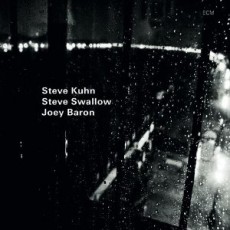
Daily Dose Of Jazz…
Steve Swallow was born on October 4, 1940 in Fair Lawn, New Jersey. As a child he studied piano and trumpet before turning to the double bass at age 14. While attending a prep school, he began trying his hand in jazz improvisation. In 1960 he left Yale, settled in New York City and played with Jimmy Giuffre’s trio with Paul Bley.
After joining Art Farmer’s quartet in 1964, Swallow began to write. It is in the 1960s that his long-term association with Gary Burton’s various bands began. The early 1970s saw him switch exclusively to electric bass guitar, preferring the 5-string.
Steve became an educator in 1974 for two years teaching at the Berklee School of Music. In ‘78 he became an essential and constant member of Carla Bley’s band, toured extensively with John Scofield in the early 1980s, has returned to this collaboration several times over the years.
Bassist Steve Swallow has consistently won the electric bass category in Down Beat magazine’s Critics and Readers yearly polls since the mid-80s. Having grown a catalogue of some five-dozen albums as a leader and sideman, he continues to compose, perform and record.
More Posts: bass
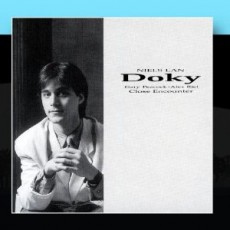
Daily Dose Of Jazz…
Niels Lan Doky was born in Copenhagen, Denmark on October 3, 1963 and first learned to play guitar before switching to piano at age 11. At the age of 15, he began working with Thad Jones, Kenny Drew, Ernie Wilkins, Ed Thigpen and others living and playing around his hometown. Shortly after finishing high school in 1981, following the advice of Thad Jones, he moved to the U.S. and studied at Berklee College of Music in Boston before establishing himself in New York City’s jazz scene.
Bassist Niels-Henning Ørsted Pedersen helped Doky land his first recording contract with Storyville records in 1986 and toured and recorded with him across Europe and in the USA during the rest the decade and well into the 1990s. During that period Pederson became a mentor and played a crucial role in helping him find his own musical voice and develop his own personal style.
Over the course of his career pianist Niels Lan Doky has recorded thirty-three albums, played for Pope Paul II, received an award from Denmark’s royal family, was appointed Member of the Music Committee under the Danish Arts Council, and made his film directing debut with the acclaimed feature film “Between a Smile and a Tear”.
He has performed with Joe Henderson, Gary Peacock, Jack DeJohnette, Ray Brown, Randy and Michael Brecker, David Sanborn, Al Foster, Billy Hart, John Scofield, John Abercrombie, Bill Evans, Bob Berg, Tom Harrell, Ray Drummond, Al Jarreau, Charlie Haden, Gino Vannelli, in addition to leading groups under his own name currently today.
More Posts: piano
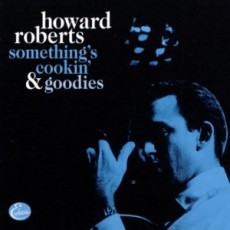
Daily Dose Of Jazz…
Howard Roberts was born on October 2, 1929 in Phoenix, Arizona and began playing guitar at age 8. By age15 he was playing professionally locally. 1950 saw him moving to Los Angeles where he began playing with musicians like Bobby Troup, Chico Hamilton and Barney Kessell. Around 1956, Bobby Troup signed him to Verve Records and he decided to concentrate on recording, both as a solo artist and session musician.
Roberts played rhythm guitar, lead guitar, bass and mandolin in the studio, for television and movie projects on such projects as The Twilight Zone, The Munsters, I Dream of Jeannie. He would work on Julie London’s Blue Moon recording, with Peggy Lee, George Auld, Shelley Fabares, Chet Atkins, Dean Martin, The Monkees, Roy Clark and many others.
In 1961, Howard designed a signature guitar with a round sound hole and single pickup that was originally produced by Gibson’s Epiphone division. Two years later he recorded his first two albums of nine with Capitol, before signing with ABC/Impulse Records. From the late 1960s, Roberts began to focus on teaching, traveling around the country giving guitar seminars, and writing several instructional books.
For some years he also wrote an acclaimed column “Jazz Improvisation” for Guitar Player magazine and founded the Guitar Institute of Technology and Playback Publishing. Guitarist Howard Roberts died of prostate cancer in Seattle, Washington on June 28, 1992, leaving a jazz catalogue of more than two-dozen albums as a leader and sideman.
More Posts: guitar
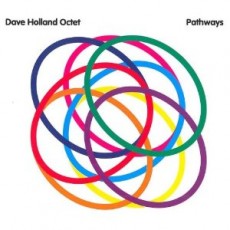
Daily Dose Of Jazz…
Dave Holland was born on October 1, 1946 in Wolverhampton, England and taught himself how to play stringed instruments, beginning at four on the ukulele, graduating to guitar and later bass guitar. Quitting school at age 15 to pursue a profession in a top 40 band, but gravitated to jazz buying albums of Ray Brown, Leroy Vinnegar, Charles Mingus and Jimmy Garrison and trading his electric bass in for an acoustic.
After moving to London in 1964, Holland began playing acoustic bass in small venues and studied with James Edward Merrett, learning to sight read, and enrolling in a three-year scholarship program at the Guildhall School of Music and Drama.
At 20, Holland was keeping a busy schedule in school, studios and Ronnie Scott’s Jazz Club playing behind American musicians like Coleman Hawkins, Ben Webster, Joe Henderson and British musicians such as John McLaughlin, Evan Parker and began a working collaboration with Kenny Wheeler that has continued to today.
In 1968 he joined Miles Davis’ group, recorded on Files de Kilimanjaro, In A Silent Way and Bitches Brew and Live at the Fillmore East, March 7, 1970: It’s About Time. Leaving Miles he joined the group Circle with Chick Corea that started a 34-year association with ECM record label. During the Seventies and 80s he worked as a leader and a sideman with Anthony Braxton, Stan Getz, John Abercrombie, Jack DeJohnette, Bonnie Raitt, Steve Coleman, Kevin Eubanks, Billy Higgins, Roy Haynes, Hank Jones, Pat Metheny and Marvin “Smitty” Smith.
Dave would go on to tour with Herbie Hancock, renew his affiliation with Joe Henderson and Betty Carter, formed his third quartet introducing Steve Nelson to the world, record dozens of albums as a leader and sideman, form his current quintet, win his first Grammy for big band album “What Goes Around”, win numerous other recognitions and he continues to compose, record, perform and tour.
More Posts: bass


